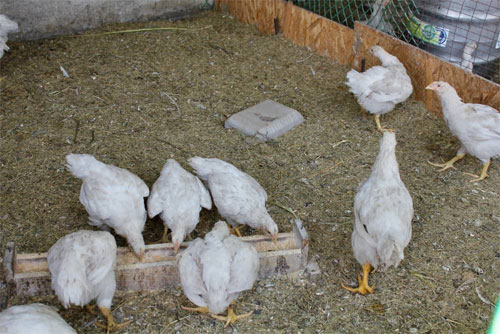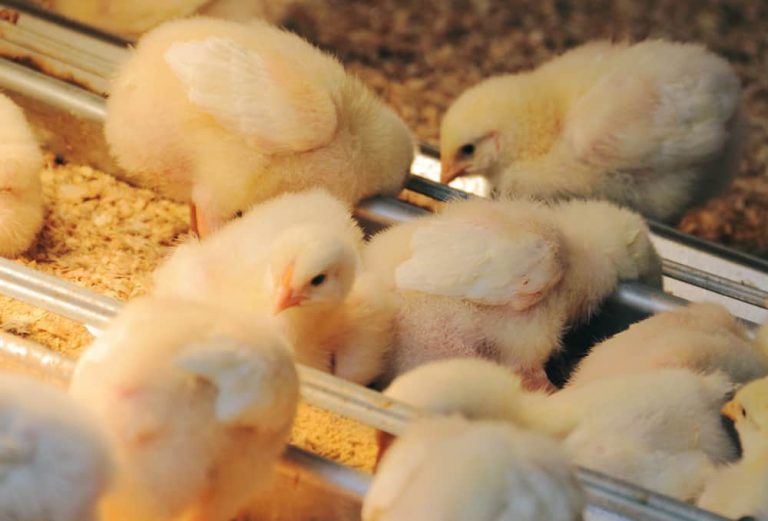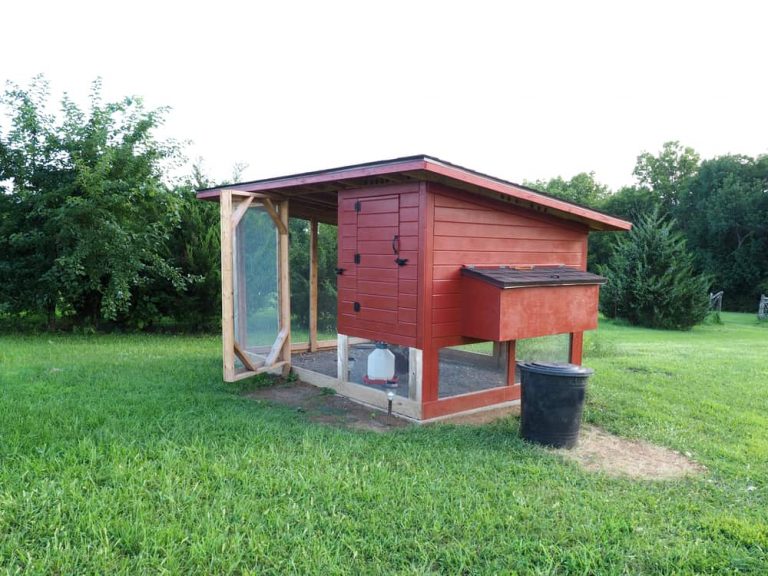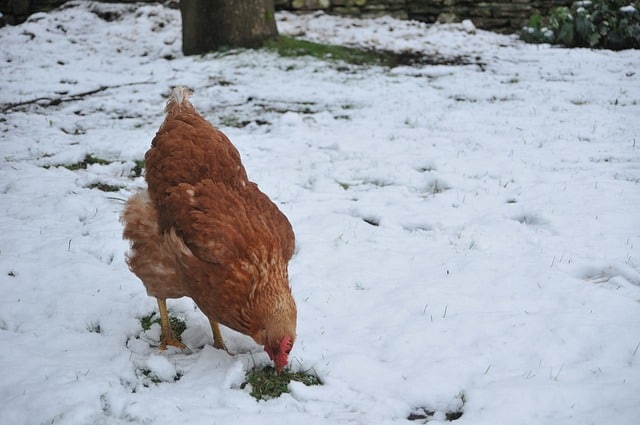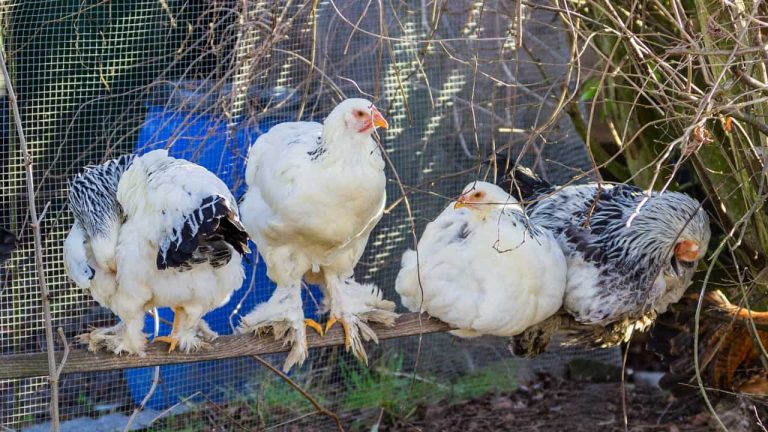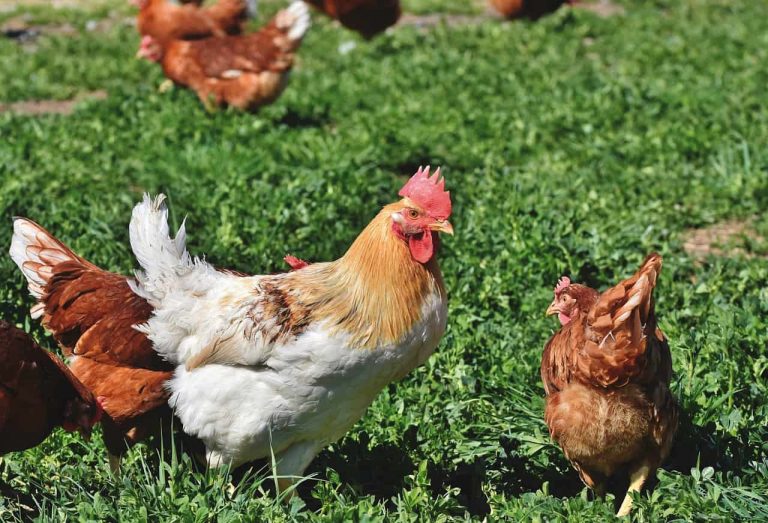Chicken coop flooring might be an issue, which, not many of us – the chicken lovers – thought would be an important aspect when it comes to the care of our feathered friends.
What is true is quite the opposite! There are many reasons to take the matter into consideration and many options in materials to choose from. So, anyone who cares about their flock should be informed and pick what is best for them!
Contents
Why should I use a Chicken Coop Floor?
Well, you actually can choose not to use flooring at all. Let’s assume that you already own a wonderful garden with lots of dirt and you can install a chicken coop there. Your flock will be happy running around, digging, and having fun. If that’s the case, then you will have to think about the pros and the cons.
- Safety is a keyword when you own domestic animals. Using a floor will provide your chickens protection on the floor level. Predators and rats might be able to dig through the dirt, but when you have flooring, it will be difficult for them to enter.
- Moreover, healthy life for your feathered friends might be threatened for another reason. The chicken manure will be gathered on the soil causing a lot of moisture. Infestations and critters will thrive in this environment and it might cause diseases to your pets.
- Cleaning is another issue to address. A chicken coop floor is easier to clean than a floor with just soil. This one takes us back to the well-being of the chickens. There are many ways to clean a floor, depending on the material, but it sure is safer for your animals.
- If we talk about temperature, a chicken coop floor stays warm in the winter, which is a very good solution for northern places. On the other hand, the soil might be cooler in the summer, if you live in a warmer location. In each case, it all depends on where you choose to install the coop.
- Finally, the cost is a critical issue. As you may imagine, using flooring is definitely more expensive than using just the soil from the earth and a deep litter method. Nevertheless, if you use a scale to balance the pros and cons, chicken coop flooring weighs more than soil in many aspects.
How to choose the best chicken coop floor
There are some prerequisites that you might want to consider while selecting the best floor for you. It is clear that you never get an all-in-one solution, but depending on the location, the climate, and the weight of your wallet you might find the most suitable chicken coop floor for your chickens.
- Protection – Safety
The first and most important requirement should be the protection level for your birds. For example, a concrete floor might be safer from predators than a mat floor. In addition, you might want to be careful not to use any toxic materials.
- Ability to Last
Since you desire to build a perfect home for your feathered friends, you also want it to be resilient. A wooden floor, when it is made with low-quality wood, might rot. The best-case scenario is to install a floor one time and keep it permanently.
- Easy To Clean
For the sake of your chickens and yourself, make the right choice of a chicken coop floor, so that you will be able to clean it easily. It will save time for you and will provide protection for the birds from illnesses.
- Cost issues
It is understandable to want to provide the best for your flock, but it is also understandable to want to keep it at a reasonable cost. If you can’t or won’t spend a lot on a chicken coop floor, the best solution is to find something in the middle of the route. Creativity and basic building skills are everything you need to keep it low-cost.
The Best Chicken Coop Floors
There are many options for a chicken coop floor. The point is to tick as many boxes as possible from the preconditions we mentioned above. Flooring is not a simple business and if you want it to be effective, it is going to take at least two layers of different materials.
- Concrete
Concrete is a very popular solution for the lower layer of the floor. If you have a steady place where you want to build your coop and you don’t have any intention to move it somewhere else for a long time, then maybe you found your material.
Sturdiness, protection, and ease to clean are only some of the advantages of a concrete chicken coop floor. Predators will not be able to access the coop and the floor will not be easily damaged. Moreover, it will not become a hotbed for germs or anything of this kind that might be unhealthy for your chickens. It is a long-term solution and it provides coolness in the summer.
On the other hand, the cost might be more than you’d expect and if you do not install it properly it might crack. It is hard to build but, in my opinion, is a very good choice in many ways.
- Wood-Plywood
Wood and plywood are less expensive materials and easy to find. You can use planks or even boards, as long as the gaps between them are not very big, to avoid predators.
A wooden chicken coop floor is easy to build and the same goes with plywood. While plywood will be cleaned easily, a wooden floor will make your life more difficult. Both of them will rot over time, although, if you paint them, they will be more protected.
- Wire
Wire is a very common and cheap material. If you choose the welded wire, it will protect your chickens from predators. Another practical advantage of the wire is the cleaning sector. Manure will drop through the holes, which is beneficial for your birds’ hygiene and you can remove it anytime to wash it!
Furthermore, this is a case when you might not need to use additional bedding. It can be cool in warm weather conditions since the air can pass through it, especially if it is an above-the-ground coop.
There are some black spots on this material as well though. Since it is a rough material, chickens might hurt their feet while standing on it. Most importantly, moisture might find ground to flourish and the coop might be colder in the winter.
- Plastic
Plastic is the perfect solution for a smaller flock! It is a durable and easily cleaned material, while it is quite movable as well. Most of them have a tray which you can take out and empty the waste, and you can install it everywhere you wish. Most of them are low-cost, but there are some which come with a ready-made coop that is a bit more expensive.
Although a plastic chicken coop floor might be a good solution for a low-in number of flocks, it is not recommended for bigger ones. It might break and it is not ideal if you want to keep rodents and predators out. Moreover, it has to be frequently cleaned, or moisture and droppings might stick on it and won’t be simply removed.
- Linoleum or Vinyl
If you want to go for the really inexpensive chicken coop floor, you can try linoleum or vinyl sheets. You can buy them and cut them in any size you wish and some of them are quite durable. If you apply the right material underneath it you will have it for a long time. Also, as you can imagine it works for every kind of climate and it can be wiped at any time! It works also very well as a second-layer floor since it will protect the wood under it from rotting.
There is a big disadvantage in these kinds of products. When the quality is low, they are toxic. Imagine a chicken pecking on vinyl and swallowing some pieces of it. They also have a slippery surface. These are the reasons why bedding is essential for your chickens’ safety!
What about the bedding?
While these floors provide safety and durability, they need something more to be completed. Right above the first material, you will have to apply a second one and even a third one.
- Rubber mats
Whether it is a thin rubber mat, or a thicker one, it is a material that lasts in time and will be helpful in cleaning. They come in squares which you take out and clean anytime, they are not dangerous for your birds and proofing. They are perfect for a middle layer, between the concrete wood and the lighter bedding.
- Pine shavings
A very popular and easy-to-clean material because they can be simply wiped and forked. Your chickens will really enjoy walking on these, they absorb chicken manure, avoid nasty smells, and are quite affordable.
- Cedar shavings
Similar to pine shavings, cedar shavings have the same benefits. They are also easy to find, absorbent, and fun for your birds. The issue here is that they are aromatic, so maybe it will be safer not to use them when your chickens are young at age. It is not yet proven if they have some kind of negative effect on them. Cedar shavings also drive away insects but they are a bit more expensive than pine.
- Sand
On a sturdy floor, sand will absorb moisture and is also easy to clean with a dustpan. A safe playground for chickens and a healthy option for them – as long as you wipe the absorbed manure regularly. Moreover, it is a good odor control solution but you will not be able to use it as fertilizer since it doesn’t compost.
- Straw
Straw is perfect for a dry climate and is low cost. It will not absorb the moisture but it will provide a nice floor for the animals to walk on and scratch. In addition, it provides warmth for your little friends when the weather is cold. If you replace it regularly, you will have no problem with the moisture and possible illnesses.
- Paper pieces/Newspaper
If you are looking for nearly free bedding, then some old newspapers can be pretty effective. They absorb moisture, they are smooth for the chicken to walk on and they keep them warm when needed. You will have to take out the old ones and put new ones on the chicken coop floor quite often, meaning several times per week. Finally, an issue you might face is the ink if you choose the newspaper, which can be toxic for the inhabitants of the coop.
- Deep litter method
The talk about bedding would not be complete if we didn’t mention the deep litter method. The idea is based on composting your chickens’ waste, fork them regularly with the bedding to give them oxygen, and then take them out or even keep them and add more bedding on the floor. It is a “recycling” method that you may even be benefited from if you actually sell the compost or use it in your own garden.
The deep litter method on a chicken coop floor offers warmth, the absence of odors, and a fine playground for your birds. Also, useful bacteria will do their job protecting your animals. On the other hand, this system needs a lot of attention for it to work, because you will have to add bedding often (which might be pricey) and rake it to create compost. Adding more responsibility to that, you must pay attention because it might be damaging to your chickens’ health (bacteria, infections, moisture).
Conclusion
Picking the right chicken coop floor for your flock is something that depends on your own circumstances. Two years ago my mother decided to raise chickens in her backyard. She chose a concrete floor with sand. To this day she hasn’t had any problems with that. What I support is to invest in good sturdy material for the base, and then choose the bedding which is best for you. After all, we all wish for our feathered friends to be happy and safe!

